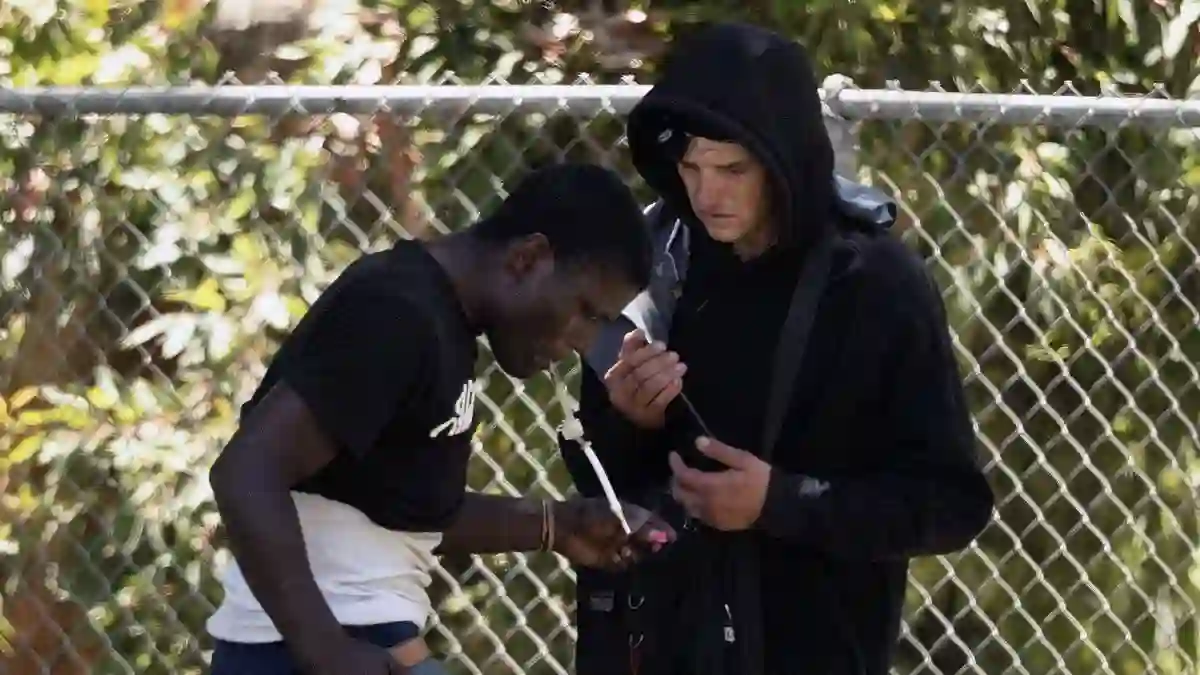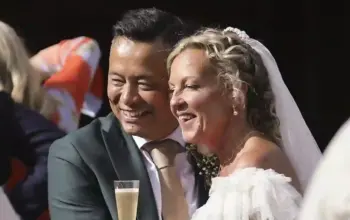What’s happening in MacArthur Park isn’t just a political flashpoint—it’s a raw glimpse into a city’s deep-seated crisis.
While Los Angeles Mayor Karen Bass condemned the recent ICE operation as a shocking military-style invasion of a peaceful neighborhood, residents and workers in the area are painting a far grimmer picture—one filled with addiction, crime, and fear that existed long before federal agents showed up.
ICE Moves In, and the Mayor Pushes Back
Earlier this week, federal immigration agents from Customs and Border Protection stormed MacArthur Park in downtown LA.
They showed up in tactical gear, some on horseback, and others in armored vehicles.
Mayor Bass was quick to react, showing up personally to demand the agents leave immediately, calling the move “unacceptable” and later describing it as “outrageous and un-American.”
In a post on X, she blasted the action: “Minutes before, there were more than 20 kids playing—then, the MILITARY comes through.”
She said the raid disrupted summer camps and accused the agents of promoting fear and chaos with no clear plan.
But What’s Really Going On in MacArthur Park?
Locals, however, are not quite buying the image of MacArthur Park as a peaceful playground under siege.
Many say the area has long been plagued by homelessness, open drug use, violence, and mental health crises.
Michael Harris, a 62-year-old Marine veteran who lives nearby, put it plainly: “There’s a serious drug and homeless infestation here.
The city needs to clean it up.” He described the mayor’s outrage as political theatre and said the real issue isn’t immigration enforcement—it’s the unchecked decay of a once-proud public space.
A Park with a Complicated History
MacArthur Park wasn’t always like this. Originally named Westlake Park and later renamed in 1942 after General Douglas MacArthur, it has gone through decades of transformation.
At one time, it was a haven for music, community, and even became a symbolic space for LGBTQ history.
Today, it sits at the center of LA’s urban struggles.
The LA Conservancy calls it “vibrant,” but the daily reality includes addicts slumped on benches, tents lining the grass, and sporadic gunfire.
Police warn people to avoid certain areas altogether, especially the eastern edge near South Alvarado Street, where drug activity and violence are rampant.
Witnesses Recall the Day the Agents Arrived
The day after the immigration raid, playgrounds were empty, and makeshift signs warned of ICE raids.
Dominic Palmer, 25, was at the park helping people sign up for free government phones.
He didn’t see kids playing—just TikTok livestreamers and protesters who had come to document the chaos.
“You wake up thinking you’ve got problems,” Palmer said.
“Then you see people living like this—it humbles you.”
Even LAPD officers on patrol warned reporters: “Be careful, don’t get hurt.
They’ll take your headphones, your phone, and your shoes.”
Fear Is Spreading Through the Immigrant Community
Sergio Carno, a 53-year-old grandfather with a Green Card, was in the park when the raid happened.
He recalled people running in fear. Though he’s lived in the U.S. since 1987, he regrets not becoming a citizen earlier—he’s now being denied.
“People are scared,” he said. “They can’t even go get groceries.”
Marla, a 49-year-old warehouse worker, was visiting with her son and elderly mother.
She says street vendors have vanished since the raids began, and her family now carries immigration papers everywhere they go.
Her son, Vladimir, 16, summed it up: “Usually my friends are outside, but right now, they’re not going out at all.”
For Some, It Feels Like History Repeating
Steve, a 44-year-old programmer, says he regularly visits the park with immigrant friends who’ve struggled to find housing.
He warned about not just drugs, but also human trafficking in the area.
“This place is close to Mexico—it’s dangerous,” he said.
Steve compared the climate of fear in immigrant communities to something more chilling.
“It sounds dramatic, but it feels like we’re living in a country full of Anne Franks,” he said, referring to the Jewish teenager who hid from the Nazis during World War II.
The City’s Words Versus Its Actions
Many residents see a growing gap between what city officials say and what they actually do.
While Mayor Bass condemned the raid and called for agents to leave, locals argue she’s overlooked the daily threats that plague the park.
“They throw money at the problem, but nothing changes,” said Harris. “It’s a sinkhole.”
Others see the ICE operation as political theatre too.
“It looked like a publicity stunt,” Steve said.
“People are showing up in body armor with guns—what are they trying to prove?”
The Bigger Picture: Caught Between Fear and Survival
As protests grow and politicians trade blame, many people living in and around MacArthur Park are simply trying to survive.
They’re immigrants, veterans, parents, addicts, and workers—some documented, others not.
All of them live in a city where fear now feels routine.
“People are terrified to leave the house,” said Steve.
“But they have to—they need to eat, pay rent, live.”
For now, the park stands as a symbol of everything that’s colliding in LA: immigration, public safety, homelessness, addiction, politics—and a growing sense that the city is losing its grip.



